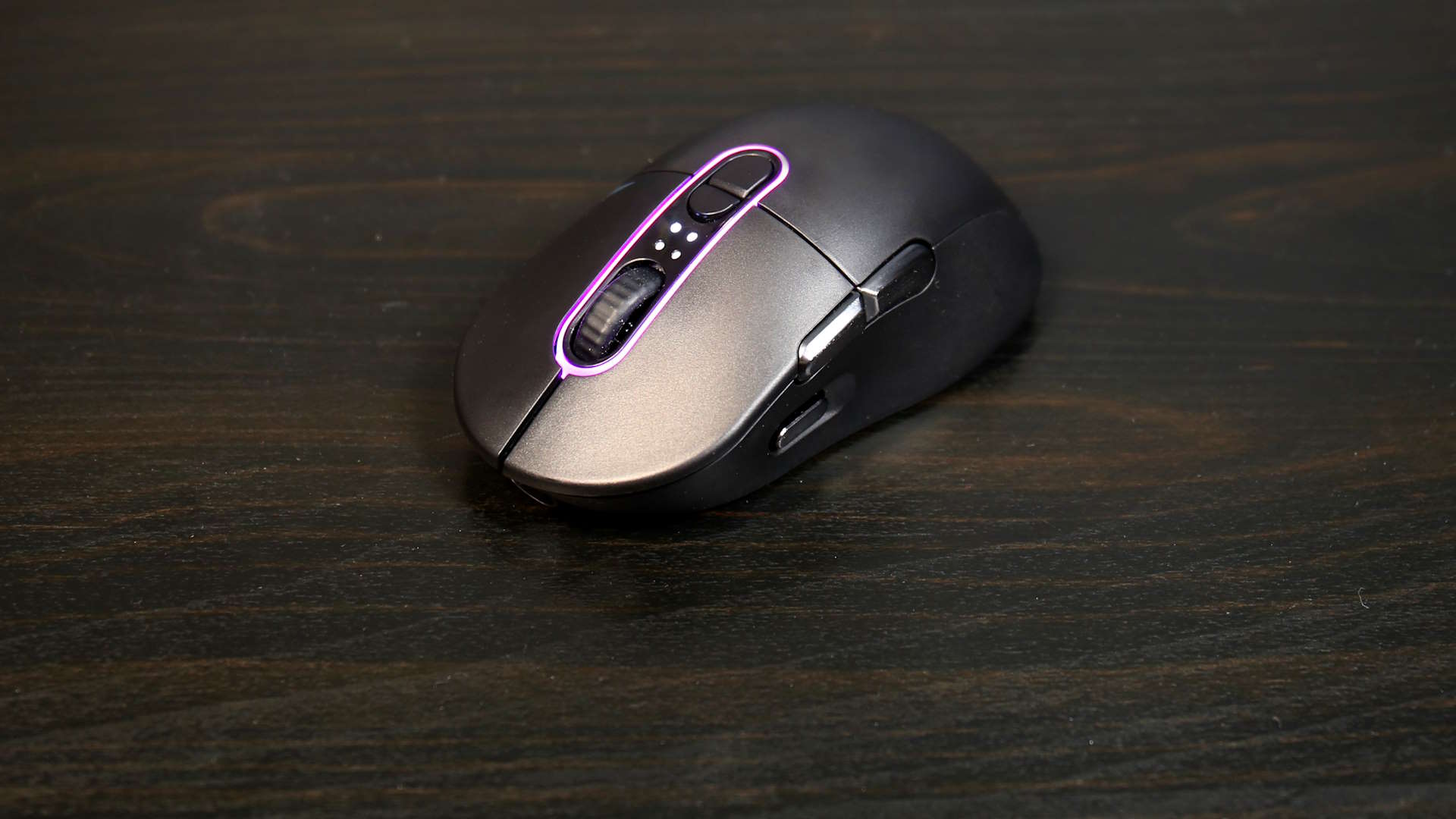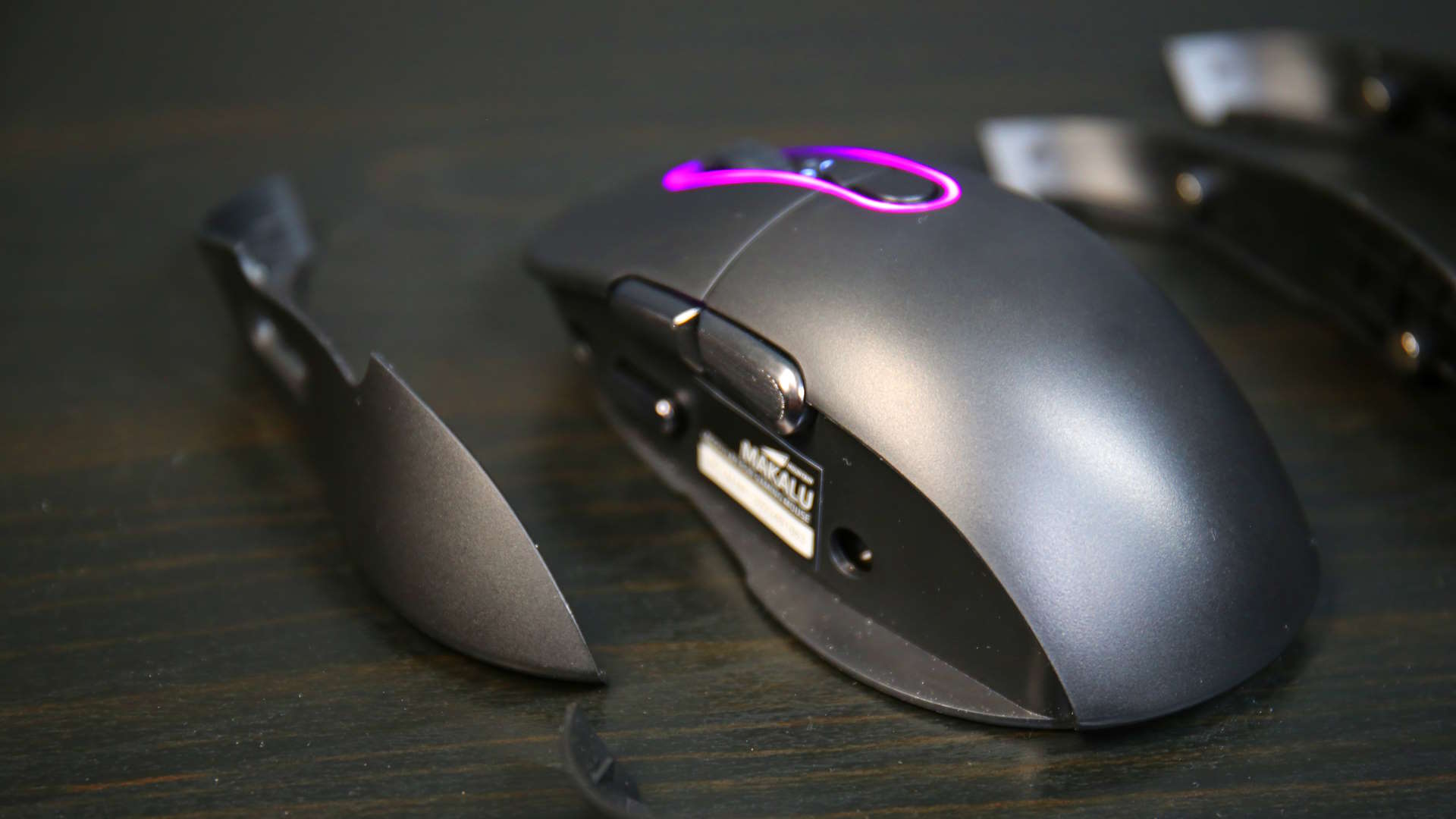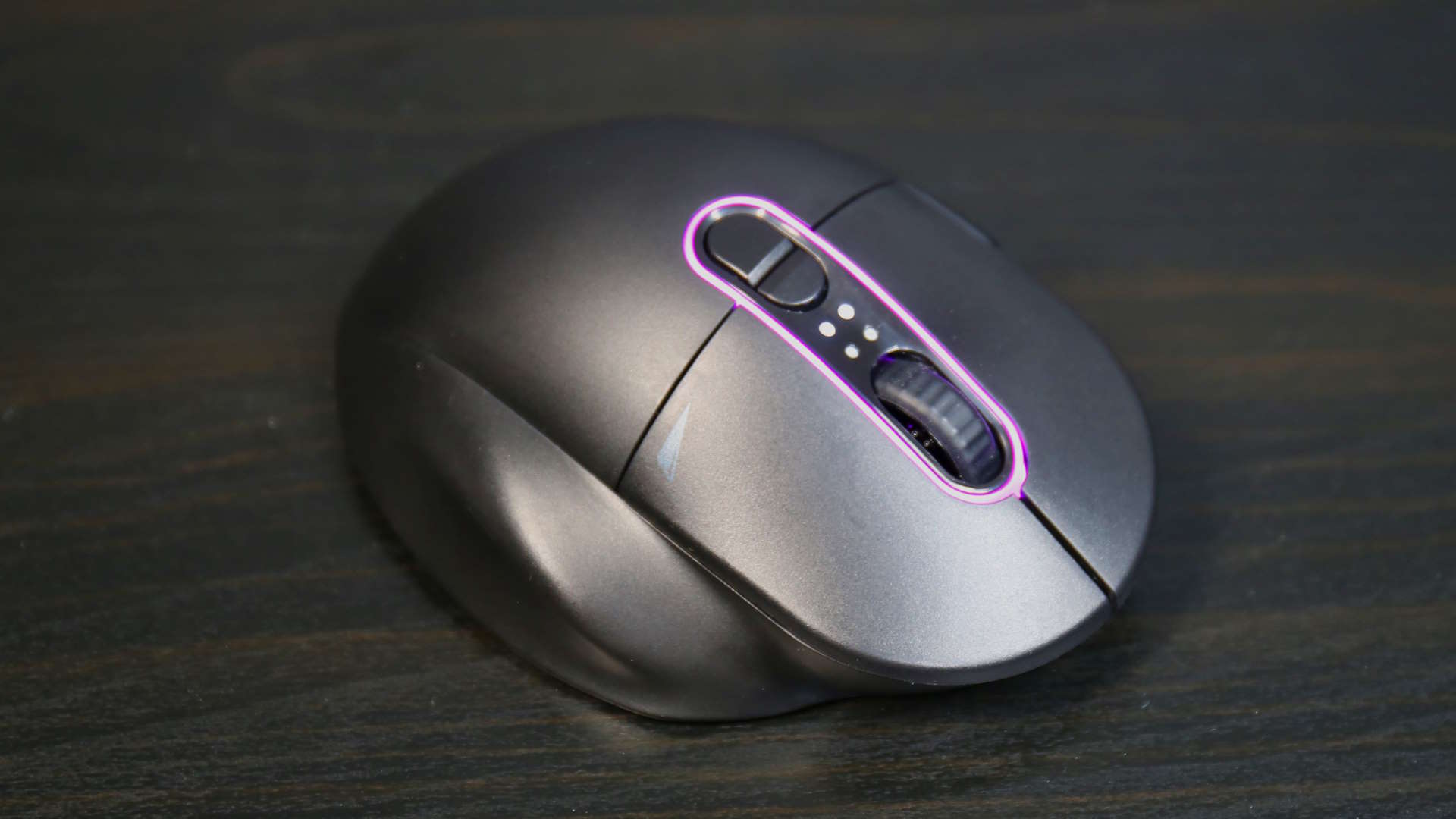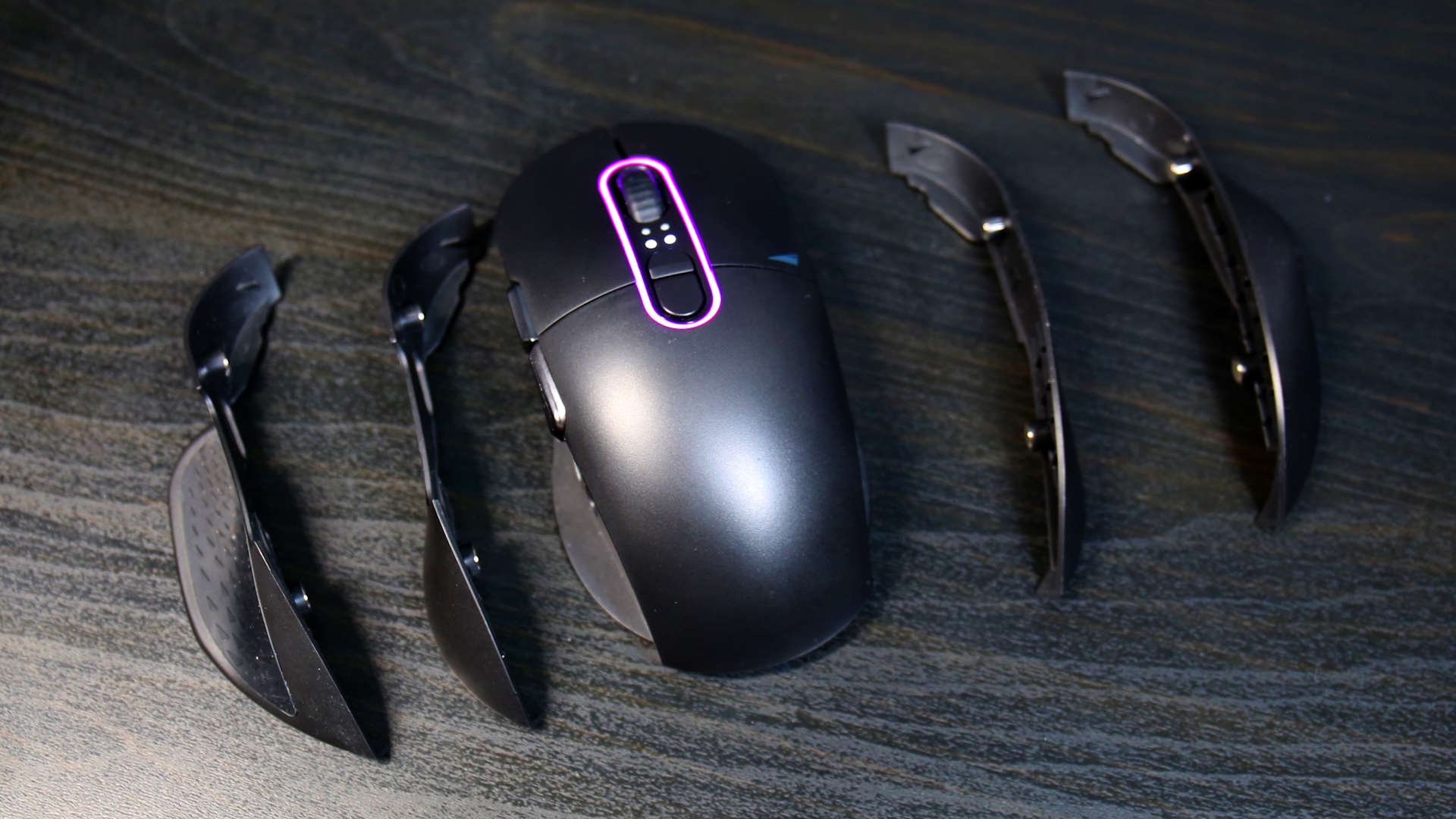
How you hold your mouse can be as personal to you as your fingerprints, so when Mountain's Makalu Max landed on my desk, with a host of customisation options, things were looking good for the company's second mouse release.
Its perforated first foray into the gaming mouse market, however, the Makalu 67, wasn't particularly well received around these parts. It feels flimsy, as a lot of ultralights do, and the RGB trim doesn't feel particularly well implemented. That, and the DPI selection button had a habit of getting caught by an errant finger.
Especially if you hold your mouse like our Jacob. I mean, like an absolute monster—the guy has his middle finger permanently attached to the scroll wheel with his index and ring fingers on the left and right buttons. Seriously, @ him, because he needs to be told it's not right.
But Mountain has built its reputation on putting user customisation at the forefront of the products it creates. Its first product, the Everest, was an excellent multi-purpose keyboard and its Everest 60 follow up has become my favourite enthusiast keeb ever. And it still has pride of place on my desktop at home.
I've been a huge fan of Mountain's take on the gaming keyboard, and I really want to like the Makalu Max. And most of the time I really do. It's got a classic PixArt sensor, offering up to 19,000DPI should you need such a level of sensitivity, but it also comes with interchangeable weights. That's not hugely innovative on its own—many other mice have done things in the past—but few have gone with the sort of weights that can allow you to balance that weight around different areas of the mouse body.
You get a set of three rings to use as clip-in weights: One solid, for the heaviest option; one cut-out, for the lightest; one with a third filled in and the rest cut-out. This last one can be dropped in with the heaviest part of the ring at any point positioned around the circle, skewing the heft towards different sides.
That's pretty niche, if I'm honest, but the aspect of customisation that will appeal to more people is the option to completely change the shape. As standard it comes as a pretty straightforward, symmetrical shape—although, because of the position of the sniper and forward/back buttons, not ambidextrous. But there are two different magnetically attachable side panels you can swap in that add support for your pinky finger or thumb.

That broadens the sweep of mouse grips that can be comfortably accommodated by the Makalu Max, and the breadth of meaty hand that can hold it, too. For those of you with monster paws, you should be well supported by Mountain's latest rodent. You can mix and match the options, leading to very different-looking mice… though I have to say I'm so damned vanilla that my absolute preference is for the simple, more slimline symmetrical layout.
Still, if you're really into the customisation angle, Mountain offers the STL files for you to download and tweak to heart's content before 3D printing your own side panels for the Makalu Max.
Aside from the custom side of things, the Makalu Max is also a wireless mouse, with no noticeable latency and a reliable connection. But it's also this aspect of the device with which I have the most issue.




I've adjusted the soft and deep sleep timings as much as I dare and I just can't get to a situation where I'm using it where I don't get deeply frustrated when I set aside the mouse for a moment and have to click a button to wake it up again. I get that it's important to maintain battery life, but I want my mouse to be there, ready to roll when I need it.
And if I set it up like that I feel like I have to charge it up far too much. The USB Type-C charging cable is soft and the fabric coating makes it easily flexible and comfortable to use as a wired mouse, but I still get frustrated seeing the neat RGB LED ring around the mouse wheel start flashing red.
✅ You've got large hands: The extra side grips allow you to extend the mouse further than many other gaming mice, catering for both the palm grip as well as claw grip, and for those with larger paws.
❌ You're after the best wireless mouse: The core frustrations I have with the Makalu Max stem from its wireless wake up and the impact that can have on battery life.
We probably sound like major Razer apologists, given the tranche of its rodents filling out our best gaming mouse guide, but neither the DeathAdder V3 Pro or V2 Pro ever gave me that feeling. Granted the V3 Pro is around $100 more right now, but the V2 Pro is the same price as the Makalu Max, and if I'm not chasing the extra girth of the magnetic side panels, that's probably the more affordable wireless mouse I'd be buying.
I am not a fan of Razer's demanding Synapse software, I will admit, but I also can't leave a Mountain review without railing against its Base Camp software. I do not like. For one thing, I can never find it. It doesn't install in a way that makes it visible to the quick search function accessible via the Windows key, and for another it's just not very nice to use. It's a common failing of even the best peripheral makers—the software is almost always horrible to use.
All that said, I do still have a soft spot for the Makalu Max. I've been using it solidly for a good long while now, and have been swaying back and forth between 'yeah, I would happily keep using this,' to 'damn it, why do you keep going to sleep so often?!'
It's at a decent price for a responsive, customisable, reliable wireless gaming mouse right now, and that makes it tempting. But there are just some quality of life issues that mean it can't be a definite recommendation today.







